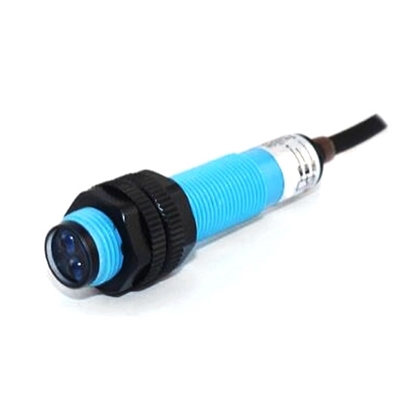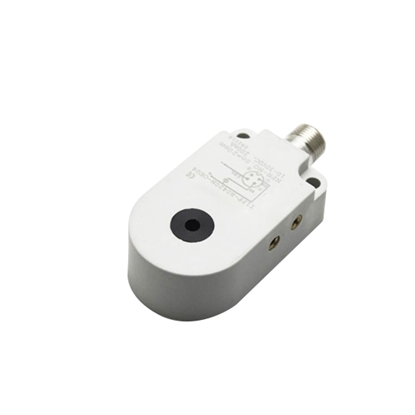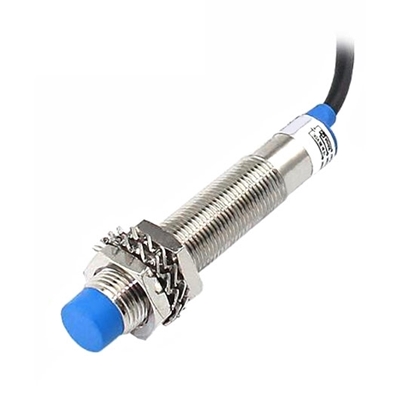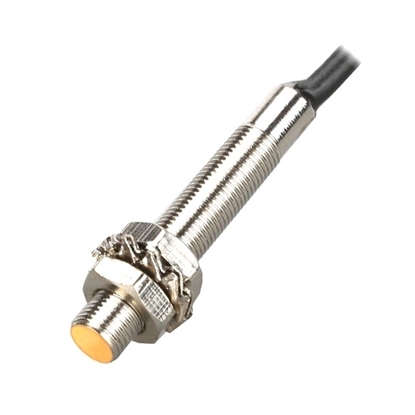Types of Proximity Sensor Switches
Proximity sensors are widely used in a variety of automated production lines, mechatronics equipment, and often appear on the purchase list, so what types of proximity sensors are available?
A capacitive proximity sensor is a trans-electric capacitive proximity switch with an electrode as the detection end, which consists of a high-frequency oscillation circuit, a detector circuit, an amplifier circuit, a shaping circuit, and an output circuit. The measurement of this type of switch usually constitutes one pole plate of the capacitor, while the other pole plate is the housing of the switch. This housing is usually grounded or connected to the housing of the device during the measurement. When an object moves towards the proximity switch, regardless of whether it is a conductor or not, its proximity always causes a change in the dielectric constant of the capacitor and thus a change in the capacitance, which causes a change in the state of the circuit connected to the measuring head, thereby controlling the switch to be turned on or off. This type of proximity switch detects objects that are not limited to conductors, but can be insulated liquids or powders, etc.
The use of conductive objects close to the electromagnetic field generating proximity switch, so that the object internal eddy current. This eddy current reacts to the proximity switch, causing the internal circuit parameters of the switch to change, thus identifying the presence or absence of a conductive object approaching, and then controlling the switch on or off. The object detected by this inductive proximity switch must be a conductive body.
It should be noted that, like capacitive proximity sensors, inductive proximity sensors detect objects that are metallic conductors; non-metallic conductors cannot be measured by this method. The amplitude variation varies with the type of target metal, and therefore the detection distance also varies with the type of target metal.
Hall proximity switch
Hall element is a magnetic sensing element. The switch made by using the Hall element is called the Hall switch. When a magnetic object moves closer to the Hall switch, the Hall element on the detection surface of the switch changes the state of the switch's internal circuit due to the Hall effect, thus identifying the presence of a magnetic object nearby and controlling the on/off of the switch. The detection object of this type of proximity switch must be magnetic.
photoelectric proximity switch
The use of the photoelectric effect is made of switches called photoelectric switches. Photoelectric proximity sensor, light-emitting diode (or semiconductor laser tube) beam axis and the axis of the phototransistor in a plane, and into a certain angle, the two axes in front of the sensor intersect at a point. When the surface of the object to be detected close to the intersection, the reflected light from the light-emitting diode is received by the phototransistor, generating an electrical signal. When the object is away from the intersection, the reflection area is not in the phototransistor perspective, the detection circuit has no output. In general, the driving current sent to the light-emitting diode is not DC, but a certain frequency of the alternating current, so that the receiving circuit also gets the same frequency of alternating signals. If the signal received to filter, only allows the same frequency signal through, can effectively prevent other stray light interference, and can improve the luminous intensity of the light-emitting diode. In layman's terms, that is, the light-emitting devices and photoelectric devices in a certain direction installed in the same detection head, when there is a reflective surface (the object to be detected) close, photoelectric devices receive the reflected light will be in the signal output, which can be "sensed" there are objects close.
Pyroelectric proximity switch
A switch made of a component that can sense temperature changes is called a pyroelectric proximity switch. This type of switch has a pyroelectric element mounted on the detection surface of the switch, and when an object with a different temperature than the ambient temperature approaches, the output of the pyroelectric element changes, thus detecting the approach of an object.
Other types of proximity switches
When the distance of the observer or system to the wave source changes, the frequency of the approaching wave will shift, a phenomenon known as the Doppler effect. Sonar and radar is the principle of the use of this effect is made. The Doppler effect can be used to make ultrasonic proximity switches, microwave proximity switches, etc. When an object moves closer, the reflected signal received by the proximity switch will produce a Doppler frequency, which can identify whether there is an object approaching.



